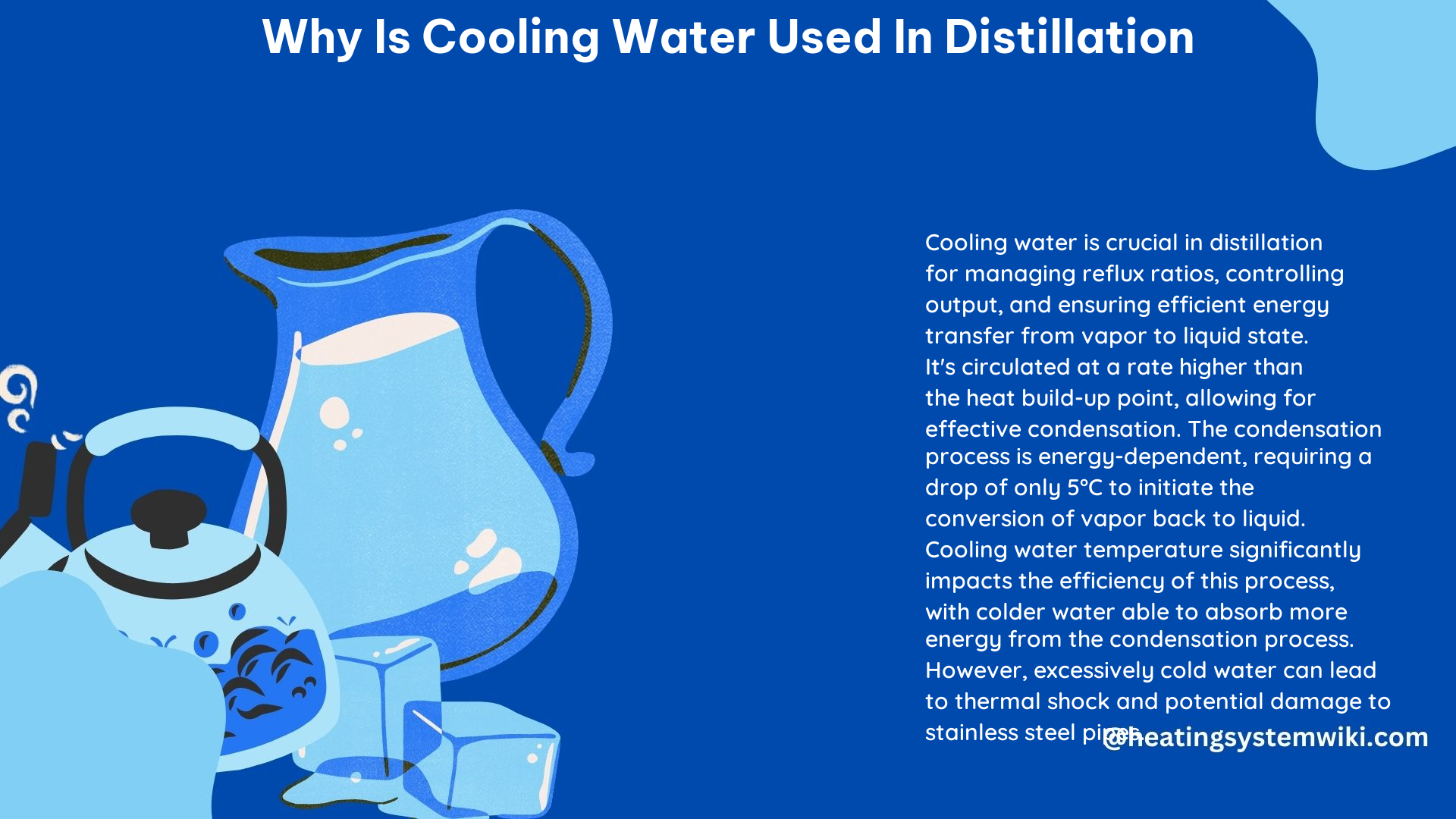Cooling water is a crucial component in the distillation process, as it is responsible for condensing the vapors back into a liquid state. This is achieved by transferring the heat from the vapors to the cooling water, which absorbs the energy and allows the vapors to condense. The cooling water is circulated through a cooling jacket or coil, typically by a small pump, at a rate that allows for efficient heat transfer without building up excess heat in the liquid flowing through the condenser.
The Condensation Process
The condensation process is not dependent on the loss of temperature but rather the loss of energy. Vapor is going to be at the same temperature at which the liquid was the instant before it went to the vapor state. However, the vapor will have significantly more energy than it did in the liquid state. It requires a much greater amount of energy to advance from the liquid state to the vapor state while still remaining at the same temperature (approximately 7 times more energy for alcohol) than is required to raise the temperature of the liquid state by 100°C alone. Technically, you can remove enough energy from the vapor to condense the vapor back to a liquid and still have the liquid at the same temperature as the vapor was at.
Cooling Management Designs

There are different designs and variations of cooling management in distillation, each with its own advantages and considerations.
Cooling Management Still (CM Still)
One common design is the cooling management still, which features cooling of the column before the product takeoff. This condenses a portion of the vapor and sends it back down the column as reflux. The cooling water flow can be manipulated to control the reflux ratio, which in turn affects the output. By reducing the water flow, the reflux ratio drops and the output increases. Conversely, increasing the cooling water flow increases the reflux ratio.
CM Still
Another design is the CM still, which generates all the reflux at the top of the column. The condenser here can be tubes, a coldfinger, a jacket, or even a coil mounted inside the column. All these designs will have similar results, as long as the reflux is centered somehow.
The choice between these designs often depends on the specific needs and goals of the distiller. For instance, a pot still is preferred by some for making whiskey, while others use a CM still for its flexibility in product selection. The CM still allows for the production of both vodka and whiskey or rum, making it a versatile option for those who want a single still that can produce different types of spirits.
Technical Specifications
In terms of technical specifications, the cooling water flow rate, temperature, and pressure drop are critical factors to consider.
Cooling Water Flow Rate
The flow rate should be high enough to ensure efficient heat transfer without building up excess heat in the liquid. For example, a typical flow rate for a 5-gallon copper pot still could be around 1-2 gallons per minute (3.8-7.6 liters per minute).
Cooling Water Temperature
The temperature of the cooling water should be low enough to effectively condense the vapors. Ideally, the cooling water should be around 50-60°F (10-15°C) to ensure efficient condensation.
Pressure Drop
The pressure drop should be monitored to ensure proper operation of the cooling system. A significant pressure drop could indicate a blockage or other issue in the cooling system.
DIY Cooling Solutions
For a DIY approach, smaller distillers or home distillers can use innovative solutions such as a swimming pool as a cooling water reservoir or a 200-liter plastic barrel of water with an aquarium pump. For more effective cooling, empty 2-liter plastic bottles filled with water can be frozen and placed in the water inside the barrel.
Conclusion
In summary, cooling water is a crucial component in distillation, allowing for the condensation of vapors back into a liquid state. Different designs and variations of cooling management exist, each with its own advantages and considerations. Technical specifications such as flow rate, temperature, and pressure drop are important factors to consider in ensuring efficient and safe operation of the cooling system.
References:
– Cooling Management – Home Distiller
– Efficient Water Use Cooling – Still Dragon
– Closed Cooling Systems and Their Challenges – Distillique
– Cooling Management Discussion – Home Distiller Forum
